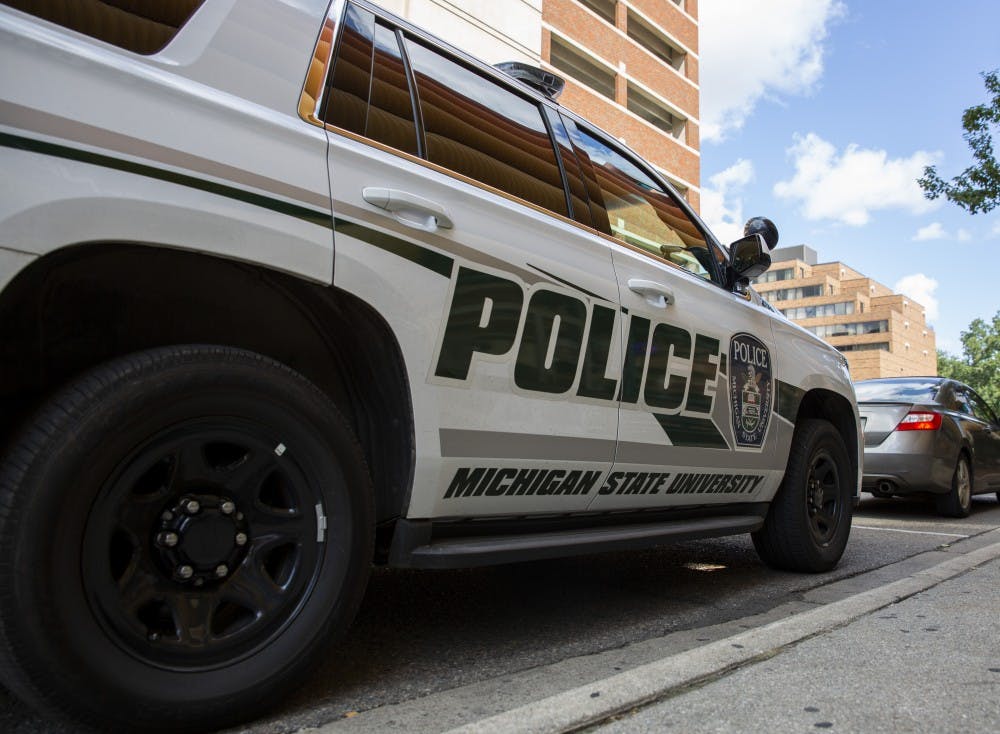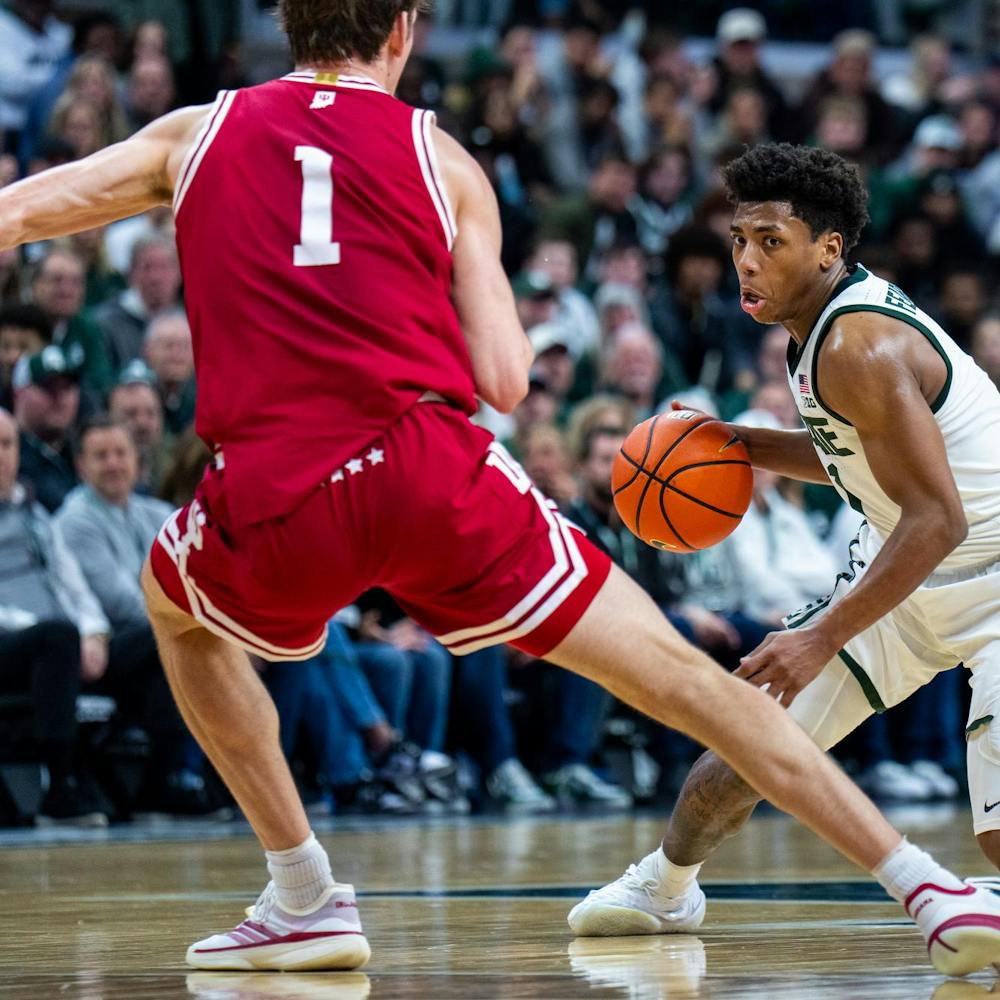In the wake of a February campus shooting that left three students dead on Michigan State University’s campus, students struggled to feel safe, demanding increased investment and attention to campus security.
Five months later, the university and its independent police department, MSUPD, say they’ve delivered.
The promise comes amid a comprehensive outside audit which will scrutinize the shooting response and make recommendations for further changes. It’s unclear when that review — which is being completed by the firm Security Risk and Management Consultants — will be completed and released to the public.
In the meantime, the university has already ushered in an overhaul of access to campus buildings, emergency communications and the very way MSU police respond to emergencies.
MSU initially aimed to partially fund that expansion with state dollars, asking the legislature in February to consider something similar to the $37.5 million approved to help Oxford High School recover from a mass shooting in 2021.
Those efforts appear unsuccessful, as the university “is not aware of funding being made available from the state,” MSU deputy spokesperson Dan Olsen said in an email to The State News.
Without specific state funds, at least $2.5 million in expansions was fit into the university’s 2023-2024 budget. Olsen could not say how much has been spent thus far, or how many additional dollars will be spent on the expansions in the future.
The new measures — including everything from locks on doors to campus-wide, AI-powered digital surveillance systems — break down into two categories: reactive measures to best notify and secure students during a potential emergency and proactive measures to best prevent, detect and respond to them.
Physical security and improved alerts
The largest physical security investment has been in door locks for classrooms.
Locks, or the lack thereof, became a subject of controversy after the shooting — as the Berkey Hall classrooms where much of the violence occurred didn’t have them.
Faculty leaders raised concerns about the lack of locks to MSU’s administration five months before the shooting, according to a Bridge Michigan report, but MSUPD chief Marlon Lynch downplayed their worries and locks weren’t added before the shooting occurred.
In the time since, MSU has worked to equip rooms with individual door locks which allow those inside to secure the door and first-responders outside to enter with a key.
As of July 17, they’ve equipped 236 rooms and Olsen said MSU hopes that “most classrooms and labs” will be complete by the start of fall semester.
MSU has also strengthened barriers to accessing campus buildings. Since March, the university has been requiring ID cards to access academic buildings and dorms from 6 p.m. to 7:30 a.m.
Olsen said those measures will remain in place for the foreseeable future.
There has also been a major overhaul of MSU’s emergency notification system.
Delayed, vague alerts left some students and faculty confused during the shooting and a second campus-wide lockdown in March, when a man brandished a knife at a business near campus.
In response to those concerns, MSUPD pledged to improve and develop new systems of clear communication.
The new system includes four methods of communication:
- Emails to MSU.EDU addresses with clearer wording and subject lines
- Push notifications for those with the SafeMSU App
- Amber-Alert style notifications for cell phones within Ingham County
- Audio messages coming from weather sirens and GreenLight emergency phone towers across campus
The university ran a successful test of the full system July 14. Another is planned for fall semester when students are back on campus.
Despite the improvements, MSU’s emergency procedures present challenges for students with disabilities, employing instructions like “do not use the elevator” and proceed to the “nearest stairway.”
After the shooting, leaders of MSU’s Council of Students with Disabilities told The State News that they felt unprotected.
MSUPD said in April it would work on more inclusive procedures. Those remain in development today, according to MSUPD spokesperson Dana Whyte.
Predictive policing and privacy concerns
Outside of expanded physical security and notifications, MSUPD is also hoping to get ahead of emergencies in the first place.
It has recently begun using the Security Operations Center, or SOC, a centralized command room monitoring and overseeing the response to potential emergencies.
The streamlined approach has been in the works since before the shooting, but is just now fully staffed in hopes of operating by the fall.
MSUPD says the SOC will utilize AI-based software and camera systems for 24/7 monitoring of the entire campus, helping it assess and respond to threats more efficiently.
But that sort of data-driven, predictive policing poses privacy and first amendment concerns for students, especially given MSU’s troubled history with similar tech, according to American University law professor Andrew Guthrie Ferguson, who studied similar systems for his book, “The Rise of Big Data Policing.”
He called MSU’s proposed camera system “security theater”: a possibly comforting notion for students and families that, in practice, couldn’t stop tragedies like the February shooting.
What systems like the one proposed at MSU could be useful for, Ferguson said, is increased surveillance of campus life through pattern recognition.
The specific capabilities of MSU’s system remain unclear, but Ferguson said products currently on the market for police departments and universities offer everything from alerting police to abnormal noise or movement in selected locations, to campus heat maps designed to “lead police to the illegal parties.”
“They say it’s going to protect you, but what are the costs of that protection?” Ferguson said. “What’s it like to live on a college campus where police are watching you and keeping track of your youthful indiscretions? … I’m quite thankful we didn’t have those camera systems when I was in college."
Outside of surveilling campus antics, Ferguson said the software's advertised abilities to detect “threatening” outliers could pose civil rights concerns and exacerbate inequalities in policing.
“What alerts are going to be put in place where an individual who the algorithm thinks ‘doesn’t belong’ is going to be profiled in ways that are unfair and unjust?” Ferguson said.
When asked if there are any measures planned to limit privacy and civil rights concerns, Whyte, the MSUPD spokesperson, said “regarding the use of AI, MSU Police and Public Safety is committed to upholding our department’s ethical standards in order to be respected and trusted by the community we serve,” in a written statement to The State News.
The planned camera expansion and the SOC aren’t the first time MSU has dabbled in AI-based policing. For years, MSUPD has used open-source AI softwares to monitor social media posts.
The softwares — like Social Sentinel or Media Sonar — allow police departments to set terms and topics which would trigger notifications.
MSUPD said the software was set to monitor threats to campus and MSU administrators, but internal documents obtained by The State News show that the internet activity monitored included planning and discussion of campus protests, not just violent threats.
A former MSUPD crime analyst even boasted about the AI software's helpfulness in tracking protests.
“We have used (the software’s) services during recent protests and after a major sporting event to help our ground team understand the mood of the crowd,” an MSU crime analyst is quoted as saying in advertising materials sent to prospective clients of Social Sentinel.
Ferguson said the use of AI to track protests presents first amendment concerns, as the possibility that police could build networks of “potential disruptors” and track those individuals has a chilling effect on campus speech.
“Maybe you don’t want to go to a public protest because you’re worried the university could later use [the information gathered with AI tools] against you,” Ferguson said.
One of the protests tracked by MSUPD’s AI tools was a 2019 campus demonstration organized by the animal rights advocacy group People for the Ethical Treatment of Animals, or PETA.
Reached for comment, PETA Senior Vice President Kathy Guillermo called the monitoring “outrageous,” and pointed out that, in 2022, an Oregon court ruled that similar use of open-source tracking softwares to keep track of PETA protests by Oregon Health & Science University amounted to “illegal surveillance.”
With the history of “overbearing” AI-based surveillance by MSUPD in mind, Ferguson says the looming camera system is especially concerning.







